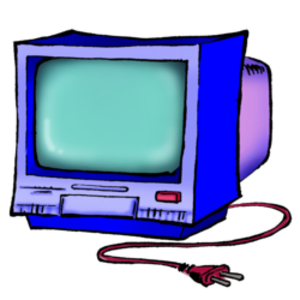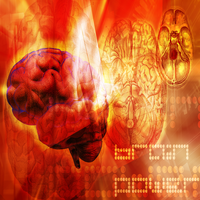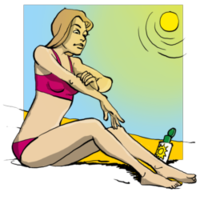Healing Everything

I get a huge number of requests for more information about my philosophy of health and healing; where it came from, and why people believe that my approach is the medicine of the future: hence the amusing title of “The Future Doc.”
My belief in an “integrated” approach to health and healing, that engages the physical, psychological, social, subtle and spiritual aspects of life is not confined to the treatment and personal growth of individuals. It also encompasses ecology, sociology and business practices. In many respects I have followed a similar path to Ken Wilber, but while he has been the theorist par excellence, whose ideas are now being test-driven in a multitude of different applications, I started from personal perception and clinical practice. I talk about some of the origins of my work in Healing, Meaning and Purpose.
It is well-known that I had the privilege of working with the Prince’s Foundation for Integrated Medicine, which is now the Foundation for Integrated Health, and I recently came across this statement by His Royal Highness The Prince of Wales in the magazine Temenos that beautifully summarizes the philosophy that underlies the entire approach.
“As I have grown older I have gradually come to realize that my entire life so far has been motivated by a desire to heal – to heal the dismembered landscape and the poisoned soil; the cruelly shattered townscape, where harmony has been replaced by cacophony; to heal the divisions between intuitive and rational thought, between mind, body and soul, so that the temple of our humanity can once again be lit by a sacred flame; to level the monstrous artificial barrier erected between Tradition and Modernity and, above all, to heal the mortally wounded soul that, alone, can give us warning of the folly of playing God and of believing that knowledge on its own is a substitute for wisdom.”
Most of us realize that the world has become terribly unbalanced, with an extraordinary over-emphasis on the intellect and a tacit assumption that the world is an object to be plundered. In the halls of academia, “heart,” “intuition” and “soul” have often become dirty words, even though it is difficult to see how we can repair our imbalanced world without acknowledging the importance of all of them. This is not to decry the importance of reasoning, but it is an appeal to acknowledge the existence of the soul, to heal our connection with and to listen to her intuitive urgings.
Prince Charles has also said that,
“In medicine, as in architecture, the doctrine of man as a machine has held sway. God was declared dead – I remember it happening. The soul was declared moribund and redundant. Ancient well-tried therapies and diagnostic techniques were simply abandoned and thrown away. The balance of the rational and the intuitive was destroyed.”
I totally agree, and it is this balance that we have to restore.
Our lives depend on it.
Mold, Dampness and Depression

It matters where you live.
I have lived or stayed in many countries, and there is no doubt that some places are a lot more congenial than others. I don’t just mean a beach in Thailand compared with the North of Scotland in winter. Some places just make you feel better. There are many physical, psychological, social and subtle reasons, but here is a relatively new one.
There is an important paper in this month’s issue of the American Journal of Public Health looking at the possibility of a link between dampness and mold in the home and clinical depression.
Molds are fungi that are found in many environments but most of them grow best in warm, damp, and humid conditions. Therefore, dwellings that have problems with damp also commonly have problems with mold. Although the physical health consequences of living in a damp and moldy dwelling are quite well known, the effect of living in such an environment on mental health has not.
Some of the known health problems associated with high levels of airborne mold spores include:
- Allergic reactions
- Asthma
- Irritations of the eyes, nose and throat
- Sinus congestion and other respiratory problems
- In people with with weakened immune systems, inhaled mold spores may germinate, attaching to cells along the respiratory tract
- Immunocompromised individuals exposed to high levels of
mold may get a systemic fungal
infection - Infections of the digestive tract, lung and skin
The researchers used survey data from 8 European cities. They created a dampness and mold score from resident- and inspector-reported data. Depression was assessed using a validated index of depressive symptoms.
The results showed that dampness and mold were associated with depression, independent of individual and housing characteristics. This association was independently mediated by perception of control over one’s home and by physical health.
This link is most likely because of the psychological and physiological consequences of living in poor housing conditions. But there could also be a direct pathological effect of mold itself.
Television and High Blood Pressure in Overweight Children

After learning that watching too much television may cause behavior problems in children, a new report in the American Journal of Preventive Medicine indicates that watching too much television may push up a child’s blood pressure, but only if he or she is overweight.
Researchers from the University of California, San Diego; the Rady Children’s Hospital – San Diego; the University of California, San Francisco; and the University of South Alabama collected data on 546 young people, aged 4 to 17 years, who were evaluated for obesity at pediatric subspecialty weight management clinics in San Diego, San Francisco and Dayton, Ohio, from 2003 to 2005. Children and their parent(s) were given a written questionnaire, which was used to estimate the average daily time spent watching TV, and then a physician verbally reviewed and confirmed the time estimate. The height and weight of the children were measured to determine a Body Mass Index and their blood pressures were recorded.
The investigators found that TV time was positively correlated with the severity of obesity. After controlling for race, site, and BMI score, both the severity of obesity and daily TV time were significant independent predictors of the presence of hypertension. Children watching 2 to 4 hours of TV had 2.5 times the odds of hypertension compared with children watching 0 to 2 hours. The odds of hypertension for children watching 4 or more hours of TV were 3.3 times greater than for children watching less than 2 hours of TV.
Yet more evidence that as wonderful as the television can be, too much of anything is not a good idea.
Well, almost anything…
“I find television very educating. Every time somebody turns on the set I go into the other room and read a book.”
–Groucho Marx (American Comedian, 1890-1977)
Broccoli and Skin Cancer

This one is going to launch a thousand gags on the late night talk shows, but it is actually quite serious.
Despite what you hear on some of those infomercials, there is a strong link between ultraviolet radiation (UVR) and many kinds of skin cancer. You can even use ultraviolet radiation to induce cancerous change in cells cultures in a Petri dish.
In an article from Johns Hopkins University published in the Proceedings of the National Academy of Sciences damaging effects of UVR can be significantly reduced by the topical application of a broccoli extract called sulforaphane that comes from broccoli sprouts. Sulforaphane was first identified over 15 years ago, and it has been shown to play a role in preventing the development of several types of tumors that can be induced by cancer-causing chemicals. It may also have a role
in fighting some established tumors.

The research involved both animal and human studies, and showed that the level of erythema (skin reddening) caused by UVR is substantially reduced when this extract is applied to the skin.
The broccoli extract is not acting like a sunscreen; it does not absorb the UVR, neither does it stop it from entering the skin. Instead it enters the cells and switches on the production of several enzymes that protect cells from UV damage. The result is that the protective effect is sustained for days after the extract has been removed.
The advantage of this is that it is much longer-lasting than any sunscreen – several days, in fact. The scientists said the protection is still there when no extract is present on/in the skin.
The researchers first tested sulforaphane on mouse models of skin cancer, and then on six healthy human volunteers.
Each of the volunteers had small patch of skin exposed to a pulse of UVR. Some of the patches were treated with the broccoli extract while others were not.
At the highest UVR dosages, UVR-induced redness and inflammation was on average 37% lower when the extract had been applied, and the protection was sustained for at least three days. They also found that protection varied greatly depending on the person – protection ranged from 8% to 78%.
These variation may be due to the volunteers’ different skin types, dietary habits and genetic differences.
In these trials, the conventional sunscreens did not provide significant protection.
This research is important for several reasons:
- The research re-emphasizes the importance of recognizing inter-individual differences. An approach that works for one person may not help another
- There are many times in life when we cannot do much to prevent something bad happening to us: radiation, stress or somebody being mean. The new approach s not just to prevent exposure, but also to work on resilience: how can we stop ourselves from having a bad reaction? The whole of us, from our cells to our soul?
- It is inevitable that people will start telling you that broccoli is the way to protect yourself against skin cancer, and I am just waiting for the advertisements to start coming in. Do not be fooled! This research involves a specific extract applied to a precise area of skin. As far as we know, it does not apply to eating broccoli
Television and Behavior Problems in Children

The debate about the possible association between watching television and children’s behavior has been going on ever since this window on the world entered our lives fifty years ago.
A new study, indicates that consistent, heavy television viewing (more than two hours a day) throughout early childhood can cause behavior, sleep and attention problems.
Yes, you did read that correctly: heavy viewing is just two hours a day!
Researchers from the Department of Population, Family, and Reproductive Health at Johns Hopkins assessed data from the Healthy Steps for Young Children national evaluation effort that looked at the effects of early, concurrent and sustained television exposure at age two and a half and again at five and a half. They also measured the effects of having a television in the child’s bedroom at age five and a half.
Sixteen percent of parents said that their child watched television for more than two hours a day at age two and a half years only, which they called “early exposure;” 15 percent reported that their children watched more than two hours of television daily at five and a half years only, which they called “concurrent exposure;” and 20 percent reported more than two hours of television viewing daily at both times (sustained exposure).
Forty-one percent of children had a television in their bedroom by the age of five and a half. Sustained television viewing was associated with sleep, attention and aggressive behavior problems, and what is known as “externalizing” of problem behaviors: throwing or breaking things.
Excessive television exposure was associated with fewer social skills. Having a television in the bedroom was associated with sleep problems and less emotional reactivity in the five year olds. Early exposure to television for more than two hours a day, which decreased over time, did not cause behavior or social problems.
The American Academy of Pediatrics recommends no television viewing for children under age 2, and no more than two hours of daily media exposure for ages 2 and older.
This is scary research. How many children are parked in front of a television for hours at a time, just to get them out of the way. And what kinds of problems are we creating for our future?
One of the smartest people I know has several children who have never watched television. They are instead all multilingual and each is an expert in at least one musical instrument.
Makes you think, doesn’t it?
Taking Action on Food Additives and Hyperactivity

Regular readers will remember my recent article concerning food additives and hyperactivity in children.
I have just read that he British Food Standards Agency (FSA) has been accused by campaigners of “chickening out” of banning additives linked to hyperactivity in children even though they funded the research that was published in the Lancet.
After the research was published, the FSA issued updated advice that eliminating the artificial colorings from the diet might have some beneficial effects in hyperactive children.
But critics said it did not go far enough and several environmental and children’s campaign groups, including the National Union of Teachers, called on the watchdog to extend that advice to all children since the additives posed a threat to psychological health.
The FSA responded by saying that the evidence was not strong enough to justify a ban and it would wait for the European Food Safety Authority (EFSA) to make a decision on use of additives in food.
EFSA says that it is considering the research as a matter of urgency and will be making an initial response within the next month.
We shall see what they have to say.
These were the main additives incriminated in the Lancet study:
Sunset yellow (E110) – Coloring found in some drinks
Carmoisine (E122) – Red coloring in jelly
Tartrazine (E102) – New coloring in some frozen and carbonated drinks
Ponceau 4R (E124) – Red coloring
Sodium benzoate (E211) – Preservative
Quinoline yellow (E104) – Food coloring
Allura red AC (E129) – Orange / red food dye
Solar Cycles and Human Disease

We have all heard about the supposed association between full moon and mental illness, though most of the research has failed to find an association between phases of the moon and mood disorders or psychosis.
But something that we have not heard so much about is the possible association between solar activity and human problems.
Investigators from Chile presented some interesting data (NR308) at the 2007 Annual Meeting of the American Psychiatric Association in San Diego last month.
They used a measure of solar activity called the Wolf number that is based on the number of sunspots. The sunspot cycles are usually between 9.5 and 11 years. They examined the clinical records of 1862 individuals who had been seen at a psychiatric clinic in Santiago over a sixteen-year period, which corresponded to one and a half solar cycles. They found that there was a big rise in admission for severe depression during years with low solar activity and a slight increase in the number of admission for mania during years of high solar activity.
This is not the first time that a connection has been found between the sun and human affairs.
The same authors published a paper in Spanish two years ago in which they also found that depression is more common when there is less solar activity and mania increases when there is more activity. They cannot say whether it is just light that is causing this or some other form of radiation.
Two researchers used the Maine Medicaid database to look at the relationship between solar cycles and human disease, and found that that radiation peaks in solar cycles and particularly in chaotic solar cycles (CSCs) are associated with a higher incidence of mental disorders. The same researchers had previously used the same database to suggest that CSCs produce more ultraviolet radiation and it is this that limits human longevity by causing chromosomal damage.
Interestingly, in 1993 two researchers also suggested a relationship between solar activity and longevity. They looked at the mean longevity of birth cohorts from 1740 to 1900 for United States of America (U.S.) Congressional Representatives exhibited oscillations that coincided with the 9- to 12-year sunspot cycle. They found that the mean longevities of these cohorts were 2-3 years longer during times of low sunspot activity than at peak activity. This phenomenon was confirmed in data from members of the House of Commons of the United Kingdom Parliament and from University of Cambridge alumni.
Researchers in Slovakia have suggested that there may be an association between solar radiation and cerebral strokes, though their data is a little difficult to interpret.
It is clear that the Heavens have more of an impact upon us than many scientists realized, and need to be factored into studies of human mood and behavior.
Negative Ions to Help Treat Mania

Last year I talked about some of the nasty problems that can be caused by the hot dry winds that blow in many parts of the planet.
I have just seen that a paper that I was asked to look at a few months ago has just appeared in print, though according to the journal it came out in February!
The investigators used a negative ionizer to augment the treatment of 20 acutely manic people. It was a standard double-blind crossover study with raters who did not know who had received what treatment.
The negative ions did indeed produce a significant improvement in manic symptoms. We already know that atmospheric ions can have an impact on serotonin levels in some parts of the brain, and that could be the mechanism of action.
It is surprising that there has been so little research into such a simple intervention, though it is important to note that the patients were also receiving medications. But it would be valuable to see if such a simple environmental change could modulate serious mood problems before they get to the level of needing hospitalization.
Non-pharmacological and Lifestyle Approaches to Attention-Deficit/Hyperactivity Disorder: 5. Exercise, Environment and Sleep

One of the most valuable things to do to help children or adults with ADHD is to help them to structure their time.
All the approaches that we have already discussed, from medications to diets, herbs and homeopathy are all tools designed to help people get to the point where they can create, accept and maintain more structure in their lives. Exercise, the environment and regular sleep are all essential contributors.
Exercise
Aerobic exercise may be particularly helpful for people who also have a mood disorder or anxiety probably by reducing inflammatory mediators in the blood.
There is a movement therapy called eurythmy that was developed by Rudolf Steiner. It is quite popular in central Europe, and there has been a report that it could help children with ADHD.
Environment
There is evidence that children with ADHD do better if they are outside, and even being a green room seems to help them.
There are plenty of anecdotes about children and some adults with ADHD improving if they have classical or New Age music in the background. Paradoxically some like and claim benefit from “heavy metal.” There is recent evidence from New Zealand indicating that music therapy may contribute to the reduction of a range of ADHD symptoms in adolescents, as it does in younger children. With the advent of the iPod, it is easy to make a playlist of music that helps attention and concentration.
The data on the effect of watching television, computer time or playing video games is a mixed bag. There are people who say that children under the age of three should not watch television at all, and the American Academy of Pediatrics recommends that children under the age of 2 years should watch no television, and that television time should be limited to less than 2 hours daily in older children. The research data has not produced a clear answer one way or the other. Some of the most recent research does suggest a link between the amount of time that children spend
watching television and attention-deficit/hyperactivity disorder, but
it remains unclear as to whether elevated levels of television viewing
are the cause or result of ADHD symptoms. Other researchers have failed to find a connection. The best thing is to play safe and to keep television viewing to a minimum: there are so many other things for a child to be doing.
There have been questions about whether other environmental factors, particularly lead, mold and Candida could cause ADHD.
Lead toxicity is well-known to cause neurological problems, but studies of a link between lead levels and ADHD have usually failed to find a link, and in a study in which children with minimally elevated lead levels were given a drug – penicillamine – to remove lead, there was no change in ADHD rating scores. So it is unlikely that lead is a factor in most children.
Because of the high rates of allergies in people with ADHD, there have been attempts to see if mold or other environmental pollutants could be causing ADHD. So far the data has drawn a blank.
Another environmental factor that has been look at is the yeast Candida albicans. It can produce nasty infections in people with compromised immune systems. But in addition, some people have claimed that Candida infections can cause an array of medical problems, including ADHD-like symptoms. People who are thought to have Candida have been treated with diets as well as the antifungal agent nystatin, with mixed results. It would be good to do a formal study of Candida in ADHD and see if there is a link and if treatment helps. So far we just do not have one.
Sleep
Sleep disturbances are extremely common in ADHD. They often get better once an individual is treated, but it is still a good idea to practice good sleep hygiene.
- Stress management
- Exercise a couple of hours before retiring
- Keeping mentally stimulated until it is time for bed
- Though we want to have a regular bedtime and bedtime ritual, to begin with don’t go to bed until you are tired
- No caffeine, alcohol or nicotine after 6pm. (Preferably, of course, no nicotine ever!!) {Remember that many over the counter painkillers contain caffeine, as does chocolate}
- Try to keep the bedroom atmosphere relaxing, and establish a sleep ritual
- Keep the room quiet and dark
- If you like aromatherapy, lavender and chamomile are usually best
- If you cannot sleep, get up and do something relaxing: struggling to go to sleep is virtually impossible.
- Do not have a television in the bedroom. Bedrooms should be reserved only for sleep in children and for one other activity in adults
- Always get up at the same time in the morning, to try and re-set your brain, and as soon as you get up, be exposed to as much bright light as possible
Sunscreens Are a Last… Resort

We talked recently about the ongoing discussion about whether sunscreens are harmful, and perhaps even the “cause” of skin tumors. The theory doesn’t make much sense.
And now there is a new report from Switzerland published in the Lancet, suggesting that thick fabrics such as denim and wool offer the best protection against the sun’s rays, while traditional thinner summer fabrics such as cotton and linen are much less effective. I can attest to that, having been burned through a cotton shirt on a cloudy day in Singapore.
The researchers reviewed 500 studies and recommended staying out of the sun, or wearing thick clothes and hats. They say that using sunscreen is the least effective option, and should really be seen as a last line of defense against the potentially harmful rays of the sun.
Obviously we need to be practical: living in the Southern United States, there is no way that we could work outside wearing our winter woollies.
There are some lightweight clothes that offer up to 50+ UPF (ultraviolet protection factor). Another good option is to wash clothes in a specialty detergent that boosts the UPF of your everyday clothes for up to 20 washes.
So sunscreens it will have to be.
Sadly many people do not use them properly.
Here are the rules for using sunscreen:
- Use plenty: incorrectly applied SPF 30 is about the same as SPF 15-20
- Apply it before being exposed to the sun: most sunscreens work by reacting chemically with the skin, so they don’t start absorbing damaging rays immediately and should be applied generously at least 20 minutes before going outside to reach maximum protection
- Reapply after swimming or sweating
- Try and avoid being outside between 11AM and 3PM
- Reduce you exposure to an absolute minimum if you have a personal of family history of skin cancer
- Make sure that you do not have any illnesses that may make you photosensitive
- Be extra careful if you are on any medications that can increase your sensitivity to the sun
If you are in any doubt about any lesions on your skin, have them checked by an expert.
It can be fun in the sun and nobody wants to be a killjoy.
But my own mother had a melanoma in her forties, almost certainly at a site that had burned repeatedly when she was a teenager. And for people who say that these cancers are caused by sunscreens, I’d like them to explain how a young man lost an eye after developing an ocular melanoma. I have it on good authority that he had never applied sunscreen to his eyeball.
There is little doubt that some people are more sensitive to the sun’s rays than others, and if you have a family history, your may have the high risk genes.
Enjoy the sun, it can do you a lot of psychological as well as some physical good.
Just please be careful out there.
“May the sun bring you new energies by day. May the moon softly restore you by night. May the rain wash away any worries you may have. May gentle breezes refresh your soul and all the days of your life. May you walk gently through the world and know its beauty.”
–Unknown Author






